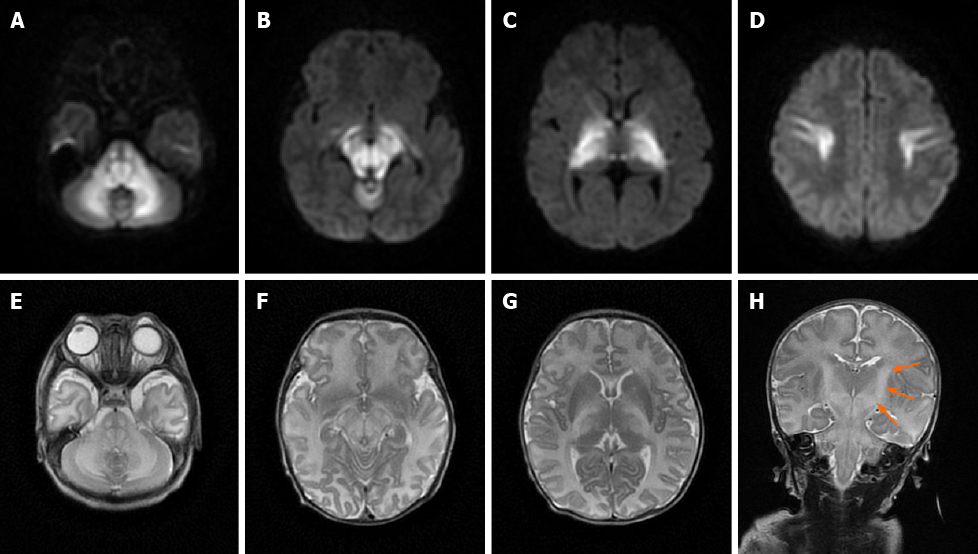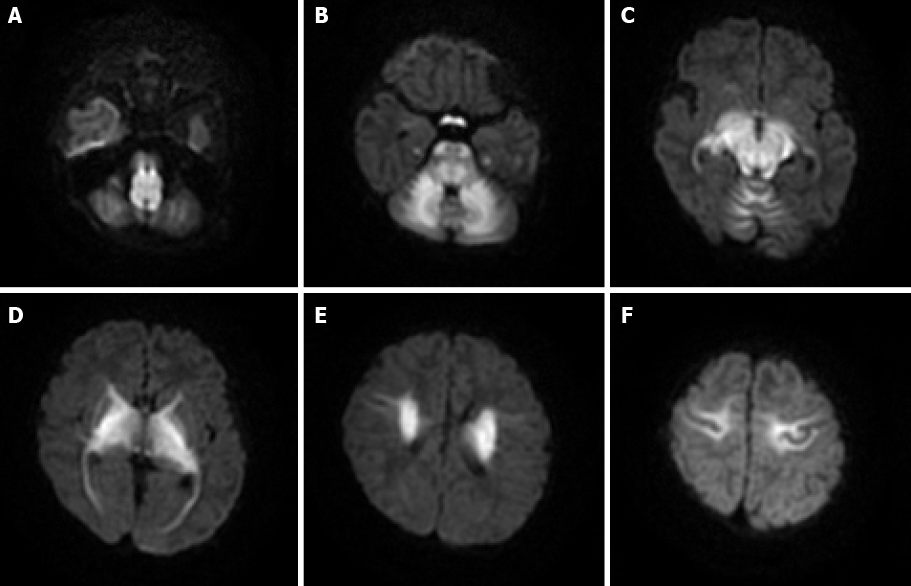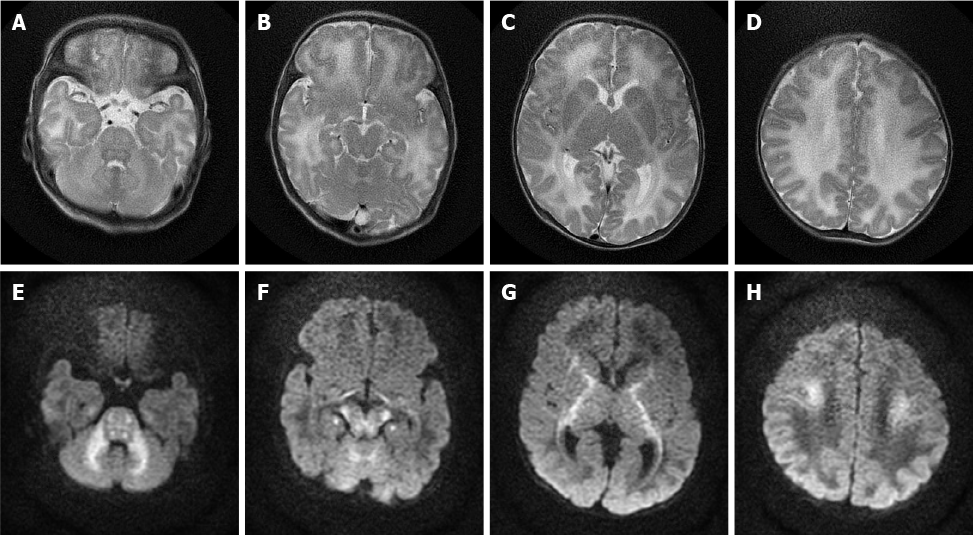Copyright
©The Author(s) 2021.
World J Clin Cases. Mar 16, 2021; 9(8): 1844-1852
Published online Mar 16, 2021. doi: 10.12998/wjcc.v9.i8.1844
Published online Mar 16, 2021. doi: 10.12998/wjcc.v9.i8.1844
Figure 1 An 11-day-old male neonate with maple syrup urine disease.
Axial diffusion-weighted, axial T2-weighted, and coronal T2-weighted magnetic resonance images of the brain show bilateral symmetrical lesions involving the corticospinal tracts (arrows), thalami, globus pallidus, midbrain, dorsal brain stem, and cerebellar white matter. A-D: Axial diffusion-weighted magnetic resonance images; E-G: Axial T2-weighted magnetic resonance images; H: Coronal T2-weighted magnetic resonance images.
Figure 2 Axial diffusion-weighted sequences obtained in a 16-day-old female maple syrup urine disease patient.
Affected areas show abnormally increased signal intensity. A: Medulla; B: Cerebellar white matter, pons, and optic tracts; C: Midbrain; D-F: Internal capsule, thalami, globus palladi, and corona radiata.
Figure 3 A 4-day-old male neonate with maple syrup urine disease.
Axial T2-weighted and axial diffusion-weighted MR images of the brain show bilateral symmetrical lesions involving the white matter of the cerebellum, pons, dorsal aspect of the mid brain, cerebral peduncles, corticospinal tract, internal capsule, and centrum semiovale. A-D: Axial T2-weighted magnetic resonance images; E-H: Axial diffusion-weighted magnetic resonance images.
- Citation: Li Y, Liu X, Duan CF, Song XF, Zhuang XH. Brain magnetic resonance imaging findings and radiologic review of maple syrup urine disease: Report of three cases. World J Clin Cases 2021; 9(8): 1844-1852
- URL: https://www.wjgnet.com/2307-8960/full/v9/i8/1844.htm
- DOI: https://dx.doi.org/10.12998/wjcc.v9.i8.1844











